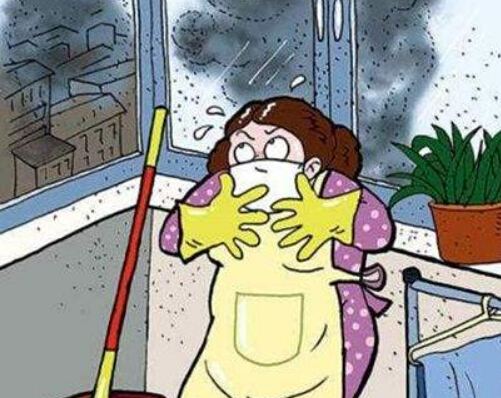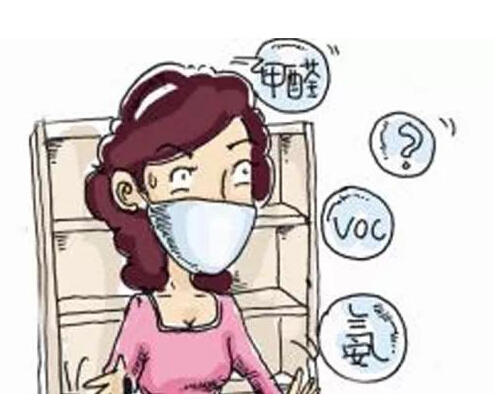Today, decoration pollution has become the main source of pollution in the indoor environment. In daily life, people feel the most direct to formaldehyde pollution, and into the newly renovated house, the pungent smell will make your throat feel uncomfortable, tears flow, and even cause illness. Formaldehyde can be described as the decoration killer "one killer"! But do you know? In addition to formaldehyde, the hidden dangers of decoration pollution are as follows... They seriously threaten people's health, while others may cause cancer or cause leukemia!

The main contaminants in indoor home furnishings are the following types: Formaldehyde, Benzene series: Benzene, toluene, xylene, total volatile organic compounds (TVOC), free toluene diisocyanate (TDI), soluble lead, cadmium, mercury, arsenic And other heavy metal elements.
Apart from causing illness, many people will also commit rhinitis and pharyngitis when they enter a new home. This is also due to a variety of decoration pollution. Allergic factors mainly include the following:
One: Formaldehyde
Formaldehyde is an allergen, when the free formaldehyde from the fiber to the skin exceeds a certain limit, it will cause people to have an allergic reaction, mild skin allergies, redness, itching and other symptoms, severe cases will continue to cough, and then Causes bronchitis and multiple allergies.
Prevention techniques: decoration as far as possible the choice of green materials; after the renovation of indoor air purification and ventilation work, postponed the entry time.
Use traditional woodwork after a few months in a ventilated area. Formaldehyde in wooden furniture sandwiches volatilizes slowly and can be closed around it to reduce its chance of volatilization.
II: Dust Mites
Aphids are insects that are not easily detected by the naked eye. Human skin desquamation and dust are ideal foods for earthworms. In the environment, there are skin desquamation. Under a certain temperature and humidity, it is more conducive to the growth and reproduction of aphids.
Prevention techniques: use bed covers, avoid the use of fluffy blankets and silk sheets; use wood or ceramic tiles as surface materials, do not use carpets, and curtains can be used with blinds or roller blinds.
Bedding and curtains should be cleaned regularly. Accelerating indoor air circulation and reducing indoor air humidity can reduce the number of dust mites.

Three: pollen and plants
Pollen is one of the "culprits" causing allergic rhinitis and allergic conjunctivitis. The pollen that causes pollinosis is called sensitized pollen. There are artemisia pollen, pollen pollen, and pollen of the family Paeoniae.
Prevention techniques: indoor to avoid planting allergic plants and flowers: such as colored plum, Hydrangea, geranium and so on. Many people can cause skin allergies by touching this type of flower.
Four: mold
Some areas in the south are relatively humid, and some homes have found hairy or moldy spots on the walls or clothing of the home. These "hairs" and molds are mainly molds. Sensitive people may cause allergic reactions by inhalation or contact with molds and mold spores, including hay fever symptoms such as sneezing, runny nose, red eyes and rash.
Prevention tricks: keep the room air circulation. Walls can be used to inhibit moulds.
Because the moisture-absorbing wood is most likely to grow mold, it is easy to work in places exposed to water, such as wooden fences, planks, and wooden lines used as toilets, kitchen door covers, and the near-ground end must be soaked with a varnish.

Tips:
1, do not rush to put into the room to buy new furniture, the best conditions in an empty room, over a period of time and then use.
2. When using wardrobes made of wood-based panels, try not to put underwear, pajamas, and children's clothing inside. Because formaldehyde is an allergen, allergic dermatitis occurs when the amount of formaldehyde that is released from the fiber to the skin exceeds a certain limit.
3, fabric sofa not only pay attention to the fabric, the filling is more stress, filling materials used to be real, elastic uniform, regardless of pressure, by, squeeze, release the pressure quickly rebound, and no pollution.
4. If it is found that the newly purchased furniture pollutes the indoor environment, it must be resolved as soon as possible. The indoor environment testing center may be invited to conduct the inspection or directly to the manufacturer.
5. Take some effective purification measures and materials inside the room and furniture to reduce the harmful gases released by the furniture. For example, the indoor environment monitoring center uses advanced photocatalysis and cold catalyst technology to develop a series of devices that specifically adsorb harmful gases in indoor and wardrobes.
Entrance Decoration Restaurant Decoration Formaldehyde Interior Decor Window Paint Home Improvement Kitchen Door Roller Shutters Blinds Shutters Shutters Shutters Bedspreads Door Shutters Curtains Bathroom Tiles Bathroom Doors Kitchen Tiles Ld Tiles
Solar Controller,Solar Charge Controller ,Charge Controller ,Solar Regulator
Solar Energy System Co., Ltd. , http://www.nbsolarenergy.com